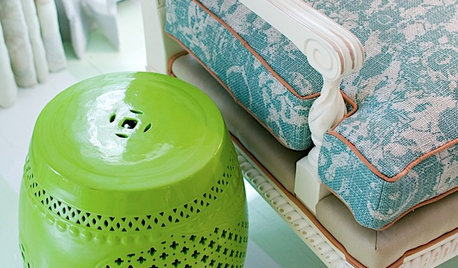need help with chipping and router bits
both
13 years ago
Related Stories

COLORPick-a-Paint Help: How to Quit Procrastinating on Color Choice
If you're up to your ears in paint chips but no further to pinning down a hue, our new 3-part series is for you
Full Story
MOST POPULAR7 Ways to Design Your Kitchen to Help You Lose Weight
In his new book, Slim by Design, eating-behavior expert Brian Wansink shows us how to get our kitchens working better
Full Story
COLORPick-a-Paint Help: How to Create a Whole-House Color Palette
Don't be daunted. With these strategies, building a cohesive palette for your entire home is less difficult than it seems
Full Story
EXTERIORSHelp! What Color Should I Paint My House Exterior?
Real homeowners get real help in choosing paint palettes. Bonus: 3 tips for everyone on picking exterior colors
Full Story
DECORATING GUIDESThe Most Helpful Furniture Piece You May Ever Own
Use it as a table, a seat, a display space, a footrest ... and indoors or out. Meet the ever-versatile Chinese garden stool
Full Story
HOUSEKEEPINGThree More Magic Words to Help the Housekeeping Get Done
As a follow-up to "How about now?" these three words can help you check more chores off your list
Full Story
SELLING YOUR HOUSE10 Low-Cost Tweaks to Help Your Home Sell
Put these inexpensive but invaluable fixes on your to-do list before you put your home on the market
Full Story
SMALL SPACESDownsizing Help: Storage Solutions for Small Spaces
Look under, over and inside to find places for everything you need to keep
Full Story
EARTH DAYHow to Help Your Town’s Beneficial Birds and Bugs
Make a habitat using local materials to provide a home to the creatures that help our gardens
Full StoryMore Discussions











aidan_m
sombreuil_mongrel
Related Professionals
Newcastle Cabinets & Cabinetry · Cordele Carpenters · Leominster Carpenters · Lexington Carpenters · Saddle Brook Carpenters · Attleboro Flooring Contractors · Fall River Flooring Contractors · Glendale Flooring Contractors · Louisville Flooring Contractors · Montgomery County Flooring Contractors · Nashville Flooring Contractors · Wilmington Flooring Contractors · Hastings Furniture & Accessories · Lebanon Furniture & Accessories · North Myrtle Beach Furniture & Accessoriessomeone2010
brickeyee
bothOriginal Author
brickeyee
aidan_m
someone2010
brickeyee
bothOriginal Author
someone2010
someone2010
someone2010
brickeyee
someone2010
brickeyee